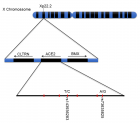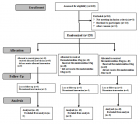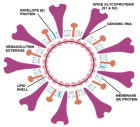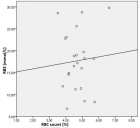Table of Contents
HRCT imaging features of systemic sclerosis-associated interstitial lung disease
Published on: 27th April, 2021
OCLC Number/Unique Identifier: 9026724831
Background: The aim of the study was to evaluate radiographic features of systemic sclerosis-associated interstitial lung disease.
Patients and methods: 116 patients with systemic sclerosis-associated interstitial lung disease (SSc-ILD) from 2010 to ... 2019 comprised our retrospective study. All patients were subject to high resolution computed tomography (HRCT). ILD patterns were classified into 7 patterns as IIPs and analyzed with pathology. We chose two staging method and two semi-quantitative score methods to evaluate the HRCT performance and analyzed with pulmonary function tests.
Results: Ground-glass opacities were the most common presentation on HRCT, followed by interlobular septal thickening, reticular opacities, intralobular interstitial thickening; honeycombing, traction bronchiectasis and nodules can also be observed. The most common pattern of SSc-ILD was nonspecific interstitial pneumonia (NSIP), secondly was UIP. There was no difference in ILD pattern between HRCT and pathology, and revealed a high congruence. The four HRCT evaluating methods presented in this study all had significant relationships with PETs.
Conclusion: The most common pattern of SSc-ILD was nonspecific interstitial pneumonia (NSIP). The ILD patterns of HRCT coincide very well with histology, and will replace pathology as the gold standard for diagnosis and evaluation of SSc-ILD. Show more >
Imaging modalities delivery of RNAi therapeutics in cancer therapy and clinical applications
Published on: 4th March, 2021
OCLC Number/Unique Identifier: 9039869756
The RNA interference (RNAi) technique is a new modality for cancer therapy, and several candidates are being tested clinically. Nanotheranostics is a rapidly growing field combining disease diagnosis and therapy, which ultimately may add in the devel... opment of ‘personalized medicine’.
Technologies on theranostic nanomedicines has been discussed. We designed and developed bioresponsive and fluorescent hyaluronic acid-iodixanol nanogels (HAI-NGs) for targeted X-ray computed tomography (CT) imaging and chemotherapy of MCF-7 human breast tumors. HAI-NGs were obtained with a small size of ca. 90 nm, bright green fluorescence and high serum stability from hyaluronic acid-cystamine-tetrazole and reductively degradable polyiodixanol-methacrylate via nanoprecipitation and a photo-click crosslinking reaction. This chapter presents an over view of the current status of translating the RNAi cancer therapeutics in the clinic, a brief description of the biological barriers in drug delivery, and the roles of imaging in aspects of administration route, systemic circulation, and cellular barriers for the clinical translation of RNAi cancer therapeutics, and with partial content for discussing the safety concerns. Finally, we focus on imaging-guided delivery of RNAi therapeutics in preclinical development, including the basic principles of different imaging modalities, and their advantages and limitations for biological imaging. With growing number of RNAi therapeutics entering the clinic, various imaging methods will play an important role in facilitating the translation of RNAi cancer therapeutics from bench to bedside. Show more >
Anal cancer - impact of interstitial brachytherapy
Published on: 1st February, 2021
OCLC Number/Unique Identifier: 9039880199
We evaluated a total of 115 patients diagnosed with anal cancer, who were treated at our clinic from 1995 to 2012. Their average age was 61 years, most often were diagnosed in stages II and III, in most cases it was a squamous cell carcinoma located ... in the anal canal. The mean follow-up was 83 months (minimum 1 month and maximum 240 months). We combined external radiotherapy with boost of brachytherapy or boost of external radiotherapy and possibly a combination of both boosts. Half of the patients received concomitant chemotherapy. We specifically evaluated local tumor regression, overall survival and the impact to therapeutic effect of the chosen irradiation technique. Complete regression was achieved in 92 patients, partial regression in 21 patients. Overall survival, regardless of stage, was 80% 3-year, 74% 5-year and 67% 10-year. The age of patients, the size of their own primary tumor and the therapeutic method used had a statistically significant effect on survival - especially the importance of brachytherapy was irreplaceable. Show more >

HSPI: We're glad you're here. Please click "create a new Query" if you are a new visitor to our website and need further information from us.
If you are already a member of our network and need to keep track of any developments regarding a question you have already submitted, click "take me to my Query."


















































































































































